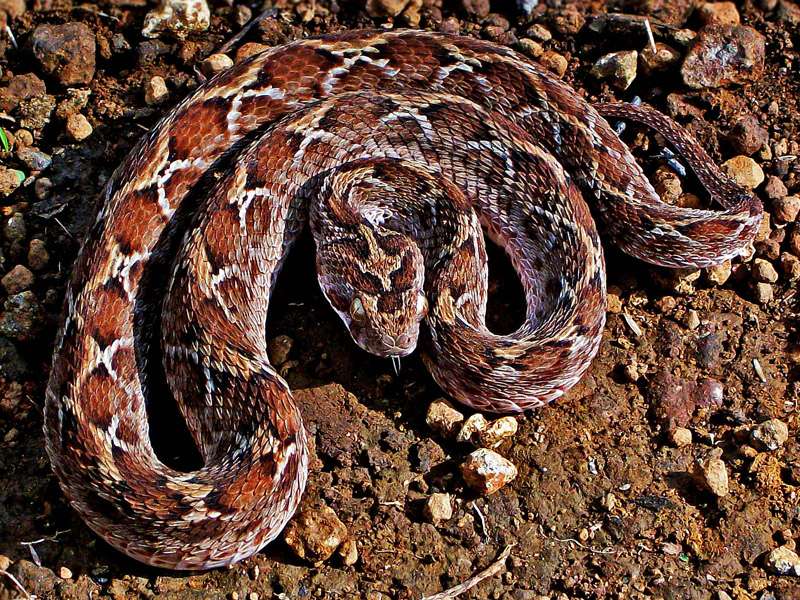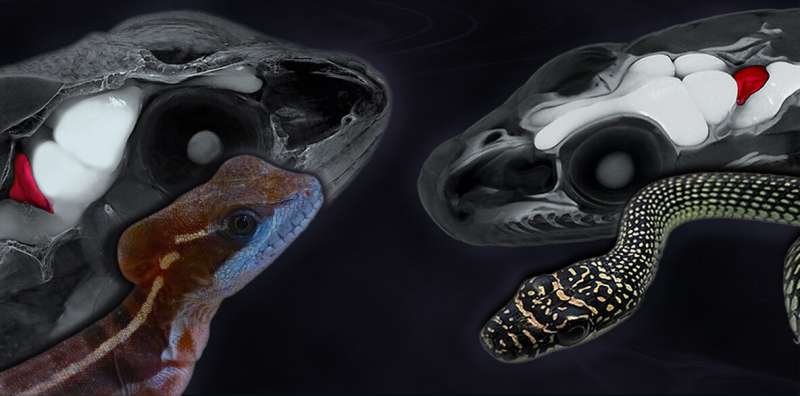Multiple correlations between brain complexity and locomotion pattern in vertebrates

Researchers at the Institute of Biotechnology, University of Helsinki, have uncovered multi-level relationships between locomotion—the ways animals move—and brain architecture, using high-definition 3-D models of lizard and snake brains.
The new study unveils the existence of multiple correlations between brain complexity and locomotion pattern in vertebrates, indicating that locomotion mode is a strong predictor of cerebellar size, shape, neuron organization, and gene expression levels. This demonstrates the existence of specific type of brain shared by animals with lifestyle or behavior similarities.
"The cerebellum is a major component of the brain that contributes to coordination, precision, and accurate timing of movement, and the diversity of this brain region is remarkable across vertebrates," describes Principal Investigator Nicolas Di-Poï, Associate Professor at the Institute of Biotechnology, University of Helsinki.
Research studies have previously shown that behavioral and ecological factors such as diet, habitat, locomotion, cognitive abilities and lifespan play an important role in driving animal brain evolution. However, comparative studies have so far largely focused on brain size measurements, and the ecological relevance of potential multi-level variations in brain morphology and architecture had remained unclear until now.
Researchers from the University of Helsinki hypothesized that in addition to expected morphological changes in limb and skeletal structures, the ways animals move from one place to another could be a strong predictor of brain complexity at various levels of biological organization, including size, shape, neuron organization and gene expression pattern.
Based on contrast-enhanced computed tomography technology and high-resolution manual segmentation, "we present here one of the first sets of high-definition 3-D reconstructions of whole-brains in vertebrates," says the first author of the study, Ph.D. candidate Simone Macrì from the University of Helsinki.

To test this hypothesis, the research group used squamate reptiles—lizards and snakes—as the main animal model because of their high levels of morphological diversity and unique behavioral features. One major challenge the group faced was to collect a representative panel of more than 100 reptile specimens with different locomotor modes, ranging from small worm-like limbless species digging and living underground to four-limbed species with facultative bipedal or flying capabilities. Such effort has involved active collaborations with museums, personal breeders and collaborators.
More information: Macrì, S., Savriama, Y., Khan, I. and Di-Poï, N. Comparative analysis of squamate brains unveils multi-level variation in cerebellar architecture associated with locomotor specialization. Nature Communications, DOI : 10.1038/s41467-019-13405-w
Journal information: Nature Communications
Provided by University of Helsinki



















